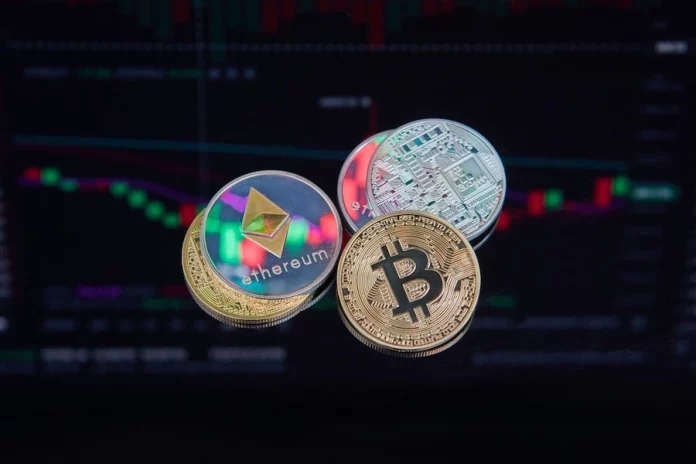The much-anticipated Ethereum 2.0 update is almost ready to be released.
The multi-component upgrade intends to increase the security and scalability of the Ethereum network by making many modifications to the infrastructure of the network. The most notable of these modifications is the conversion from a proof-of-work (PoW) consensus process to a proof-of-stake (PoS) model.
What Is ETH 2.0?
This next version of the Ethereum blockchain, codenamed “Serenity,” is sometimes known as Ethereum 2.0 or “Eth2. The upgrade intends to improve the Ethereum network’s scalability, security, and accessibility in order to avoid bottlenecks and handle more transactions concurrently.
We highly suggest you look through this informative guide providing step-by-step investment tips on how to buy Ethereum uk, alongside what the future holds for it.
When Can We Expect ETH 2.0?
The initial phase of Ethereum 2.0, known as the Beacon Chain, went online on December 1 of 2020. Native staking on the Ethereum blockchain is now possible thanks to the Beacon Chain, a major component of the network’s transition to a Proof-of-Stake consensus process. Unlike the Ethereum mainnet, this is a distinct blockchain.
The “Merge” phase, which will bring the Beacon Chain into the Ethereum launch, was scheduled between April till June of 2022.
Shard chains, which play an important role in the Ethereum network’s scaling, are in the last stages of the development process. Shard chains, as opposed to centralising all transactions on a single blockchain, disperse them among 64 separate chains.
As a result, it will be considerably easier to run an Ethereum node from a hardware viewpoint as significantly less data will need to be stored.
According to the Ethereum Foundation, a complete Ethereum 2.0 upgrade should be completed by 2023.
How Is ETH 1.0 Different From ETH 2.0
Proof-of-Stake (PoS) will replace the Proof-of-Work (PoW) consensus method now used by Ethereum 1.0.
What Is The Difference Between PoS And PoW?
Decentralised transaction validation using blockchains like Ethereum are needed. As with other cryptocurrencies, Ethereum relies on a consensus method known as Proof of Work.
To validate new transactions and solve complicated mathematical riddles, miners in this structure make use of the computing capability of a machine. New transactions are recorded in the blockchain when the first miner solves a problem. They are then given the network’s native coin as a reward for their labour. The problem, however, is that this procedure may be extremely insensitive to energy, especially when the processing power utilised by miners who were unsuccessful in solving the riddle is wasted.
Rather than depending on miners, regular users can prop up a network’s native coin and become the network’s transactions validators. To prevent the network from executing fraudulent transactions, validators function in a similar fashion to miners.
The selection of these validators is based on the amount and length of time invested in crypto.
Other validators will then be able to confirm that a block has been observed. A new block can be added to the blockchain if there are enough witnesses. Those that successfully block the proposal are then compensated for their efforts. ‘Forging’ or minting’ are two terms used to describe this procedure.
As a result, PoS is more energy-efficient compared to PoW, thanks to the separation of the consensus method from the computationally costly parts of the system. It also implies that you don’t need a large amount of computational power to protect the blockchain.
ETH 2.0’s Scalability
Scalability is a major factor the upgrade
Delays and congestion are caused by the present Ethereum network’s inability to process more than 30 transactions per second. Up to 100,000 transactions per second are promised by Ethereum 2.0. The installation of shard chains will lead to this rise.
In What Ways Will ETH 2.0 be More Secure Than Its Predecessor?
Ethereum 2.0 was designed with more security accordingly. If there are only a few validators, the PoS system becomes less secure and centralised. ETH 2.0 becomes significantly safer as it moves toward decentralisation with a requirement of 16,384 validators minimum.
What Impact May ETH 2.0 Have On The Price Of Ethereum?
The more scalability you have, the more demand you have. Ethereum’s price should rise as a result, at least theoretically.
100,000 transactions per second will be its capability when Ethereum 2.0 and rollups function together and the next billion people will have a “completely seamless experience”.
Blocknative CEO Matt Cutler is likewise positive, especially in light of the anticipated reduction in gas prices that will accompany the release of Ethereum 2.0.
Customers are looking for ways to reduce processing fees and increase network speed, he said to a trusted spokesperson.
The momentum of the Ethereum developer will also be bolstered by the attention paid to important accomplishments in the Ethereum ecosystem. However, despite the volatility that is inherent in crypto asset values, this will have a long-term beneficial influence on Ethereum’s price,” Cutler said.
This Is The Way ETH 2.0 Will Go In The Future
Seeing as a lot has changed over the voyage, it’s difficult to picture the future clearly.
After the shard chains launch, the Merge event was formerly scheduled to take place. According to the Ethereum Foundation, there was a “boom of layer 2 scaling solutions.” As a result, it said, the Merge has taken precedence over proof-of-work transitions.
Vitalik Buterin, the co-founder of Ethereum 2.0, gave forth a 5 to 10 year vision for ETH 2.0 back in 2020.
According to him, the volume of the difficulties are now “increasingly about development, and it’s part of the pot will only continue to expand over time.”
As Buterin pointed out in June of 2020, ETH 2.0 will have to rely on current scaling mechanisms like ZK-rollups for at least two years prior to using shard chains as its next major upgrade.
This will be the first time since August 2021 that transaction fees will be handled differently on the Ethereum network. Deflationary pressure will be placed on the Ethereum network by EIP-1559, which sees users pay a base charge that is burnt instead of flowing to Ethereum miners.












